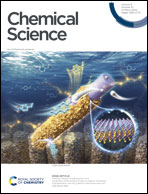The intricate link between membrane lipid structure and composition and membrane structural properties in bacterial membranes
Abstract
It is now evident that the cell manipulates lipid composition to regulate different processes such as membrane protein insertion, assembly and function. Moreover, changes in membrane structure and properties, lipid homeostasis during growth and differentiation with associated changes in cell size and shape, and responses to external stress have been related to drug resistance across mammalian species and a range of microorganisms. While it is well known that the biomembrane is a fluid self-assembled nanostructure, the link between the lipid components and the structural properties of the lipid bilayer are not well understood. This perspective aims to address this topic with a view to a more detailed understanding of the factors that regulate bilayer structure and flexibility. We describe a selection of recent studies that address the dynamic nature of bacterial lipid diversity and membrane properties in response to stress conditions. This emerging area has important implications for a broad range of cellular processes and may open new avenues of drug design for selective cell targeting.

- This article is part of the themed collections: Most popular 2024 chemical biology articles and 2024 Chemical Science Perspective & Review Collection


 Please wait while we load your content...
Please wait while we load your content...